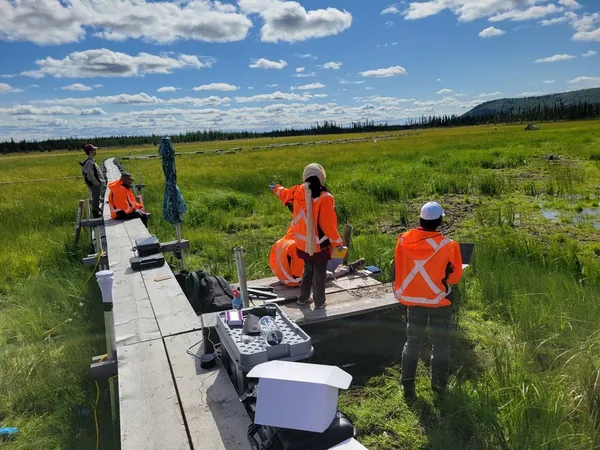
NASA's Revolutionary AI Tool OnAIR Transforms Spacecraft Autonomy!
2024-09-23
SAN FRANCISCO – Artificial intelligence (AI) is set to revolutionize the capabilities of spacecraft, enabling them to autonomously gather critical data without the need for constant instructions from ground control. This leap in technology will not only enhance spacecraft resilience but also facilitate complex mission architectures involving collaborations with landers and rovers.
Evana Gizzi, the AI research lead at NASA's Goddard Space Flight Center, emphasized the limitations of previous methods during an interview with SpaceNews. "We’ve been limited with the way we’ve done work so far," Gizzi noted, highlighting that many ambitious projects require the integration of AI to be fully realized.
Entering a New Era with OnAIR
To ease the transition into AI integration, the NASA Goddard Space Autonomy and Resilience (SPAR) lab has introduced the Onboard Artificial Intelligence Research platform, or OnAIR. This innovative open-source software pipeline and cognitive architecture tool is now available on GitHub, making it accessible for developers and researchers worldwide.
OnAIR has already demonstrated its potential through a prototype tested on NASA's NAMASTE mission— a groundbreaking project using autonomous drones to assess methane distribution in Alaskan permafrost regions. "OnAIR helped the drones maximize the acquisition of data on areas of high scientific interest," explained Mahmooda Sultana, an instrument scientist involved in the project. The platform facilitated standardized data processing operations, optimizing the mission’s outcomes.
Innovations in Space Testing
Further demonstrating its versatility, OnAIR was also evaluated during the SCENIC project aboard the International Space Station. SpaceCube, a reconfigurable processor made from commercial and radiation-hardened components, presented unique challenges when it came to integrating OnAIR. The timeline for this mission squeezed a full year of preparation into just six months after unexpected schedule changes were revealed.
James Marshall, a software engineer at NASA Goddard, highlighted the hurdles the team faced, including SCENIC's slow processing capabilities. "The clock speed was 100 megahertz and the architecture was less common," he explained. "This made porting the Python libraries we needed difficult and performance was notably slow."
Despite these issues, the team successfully overcame several obstacles, thanks in part to their prior experience with SCENIC's flight systems, allowing them to test their work effectively before deployment.
Revolutionizing Future Missions
The implications of OnAIR's development extend far beyond individual missions. As NASA and the aerospace industry pivot towards more complex mission concepts, the need for robust AI solutions will become essential. With this exciting new tool, NASA is not just anticipating the future of space exploration – they are actively shaping it.
Stay Updated! Follow our coverage for more groundbreaking developments in space technology and how AI is redefining our understanding of the universe!


 Brasil (PT)
Brasil (PT)
 Canada (EN)
Canada (EN)
 Chile (ES)
Chile (ES)
 España (ES)
España (ES)
 France (FR)
France (FR)
 Hong Kong (EN)
Hong Kong (EN)
 Italia (IT)
Italia (IT)
 日本 (JA)
日本 (JA)
 Magyarország (HU)
Magyarország (HU)
 Norge (NO)
Norge (NO)
 Polska (PL)
Polska (PL)
 Schweiz (DE)
Schweiz (DE)
 Singapore (EN)
Singapore (EN)
 Sverige (SV)
Sverige (SV)
 Suomi (FI)
Suomi (FI)
 Türkiye (TR)
Türkiye (TR)